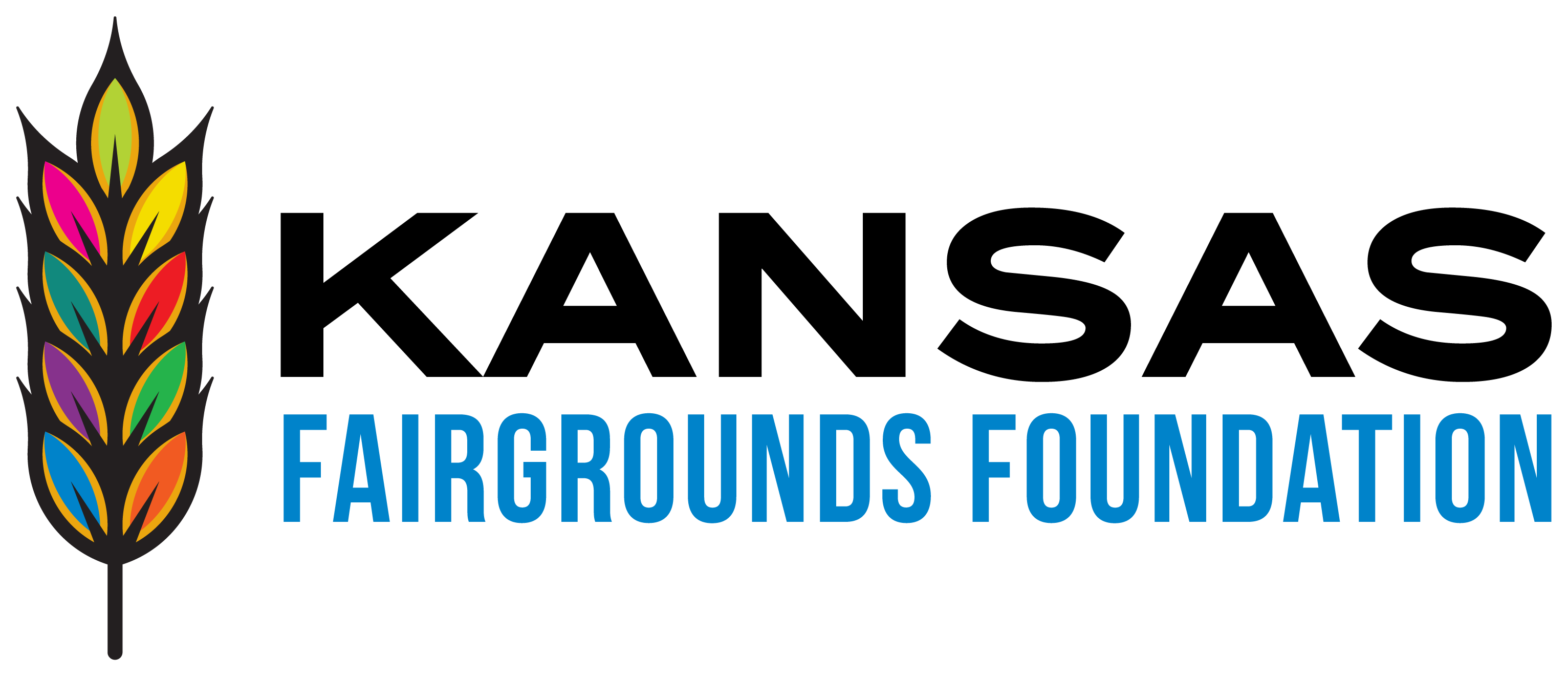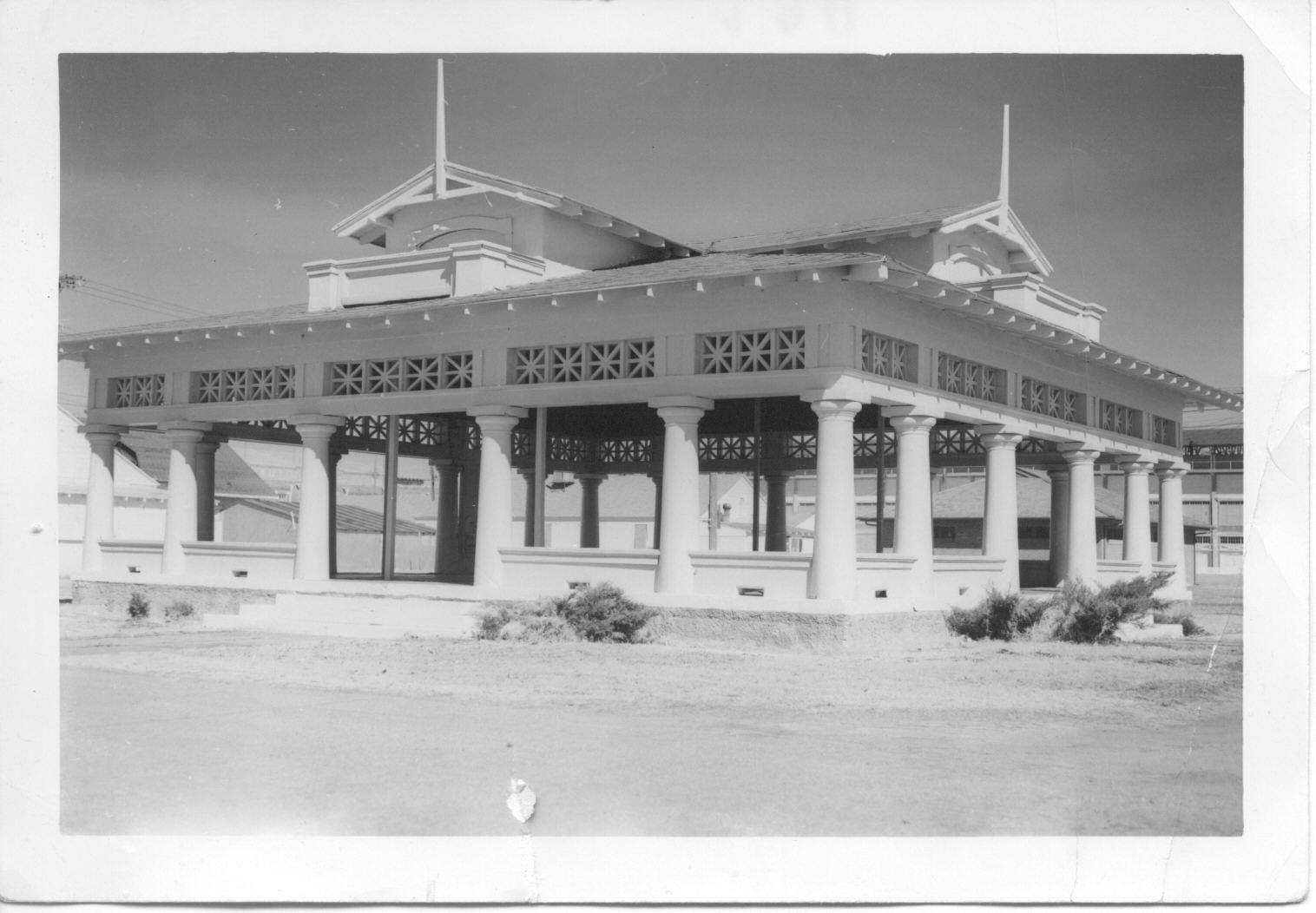The Capper Project was started in fall of 2021 and was dedicated on July 24, 2023. The Kansas Fairgrounds Foundation was challenged with rebuilding the House of Capper, which had been deemed structurally unsound, in its original architecture design. Partnering with the Kansas State Fair, the Foundation developed a plan to rebuild the House of Capper and to add to the Kansas State Fairgrounds an educational walk-through park that highlighted the work of Arther Capper, the Capper-Volstead Act of 1922 and the celebrated the impact cooperatives have made and continue to make in the State of Kansas and the United States.
House of Capper
The House of Capper has been a centerpiece attraction for the Kansas State Fair since 1916. The newly rebuilt House of Capper gives this centerpiece attraction new life. With a modern lighting and sound system, the building provides a beautiful setting for free entertainment and events during the Fair as well as an outdoor venue option for non-fair events.
Capper Cooperative Park
The Capper Cooperative Park provides an inviting and well-lit landscape which leads into the House of Capper. The storyboards throughout the park commemorate the Capper-Volstead Act of 1922, the work of former Kansas Governor and US Senator Arthur Capper and communicate the important work cooperatives have done and continue to do in their communities, the state of Kansas and the country.
The Capper Project is the only project of its kind in the United States which celebrates and pays tribute to the significant impact of cooperatives. There are more than 1.4 million cooperative members in the state of Kansas and tens of millions cooperative members across the country.
Park Audio & Visual Tour
The Capper Cooperative Park Storyboard

Sponsor Storyboard

Arthur Capper Storyboard

The Capper-Volstead Act Storyboard

What is a Co-op Storyboard

Purpose of a Co-op Storyboard

7 Cooperative Principles #1: Principles 1-3 Storyboard

7 Cooperative Principles #2: Principles 4-7 Storyboard

Universal Cooperative Principles Storyboard

Cooperatives and Their Communities Storyboard

Types of Cooperatives Storyboard

Kansas Cooperatives Storyboard

Benefits of Being a Cooperative Member Storyboard

You Are Part of the Cooperative World Storyboard

History of the House of Capper Storyboard

House of Capper Storyboard

Support
The Kansas Fairgrounds Foundation and the Kansas State Fair partnered with the Kansas Cooperative Council to create funding opportunities as a part of this project in telling the cooperative story. The total cost of this project was approximately $1.25M which was provide through donations and support from individuals, cooperatives, organizations, Foundations, and grants. Builder level sponsors at $100,000 or more include: Kansas Cooperative Council, ProValue Insurance, Skyland Grain, LLC, Kansas Department of Commerce and the Kansas Fairgrounds Foundation.
If you have an interest in assisting with the maintenance and upkeep of this beautiful project on the Kansas State Fairgrounds, funding opportunities are still available. Specifically, pillar sponsorships are available at $10,000 each as well as other levels of sponsorship. Donate to this project today by clicking on the DONATE NOW button on this page or share with the Foundation your desire to support this project at: info@KansasSFF.org or 620-615-7388.
Project Sponsors Include:
Builder Level $100,000+
Kansas Cooperative Council
Kansas Department of Commerce
Kansas Fairgrounds Foundation
ProValue Insurance
Skyland Grain, LLC
Benefactor Level $25,000 to $50,000
CHS Foundation
CoBank
Land O’Lakes
Kansas Electric Cooperative
MKC
The Farmers Cooperative Elevator Co
Storyboard Sponsor $20,000 to $24,999
Kanza Cooperative Association
Midland Marketing
Pillar Sponsor $10,000 to $20,000
Ag Partners Cooperative, Inc
Alliance Ag & Grain, LLC
Central Prairie Coop
Central Valley Ag Coop of York, NE
The John & Sara Evans Family
Midway Coop Assn
Pride Ag Resources
Sublette Co-op
The Farmers Cooperative Elevator Co
Triangle H Farms (In memory of Gregory J. Hands, past chairman Garden City Co-op)
Trinity AG, LLC
Kansas Electric Cooperatives (4 Rivers Electric Cooperative Inc., Alfalfa Electric Cooperative Inc., Bluestem Electric Cooperative Inc., Brown-Atchison Electric Cooperative Assn. Inc., Butler Electric Cooperative Assn. Inc., Caney Valley Electric Cooperative Assn. Inc., CMS Electric Cooperative Inc., Doniphan Electric Cooperative Assn. Inc., DSO Electric Cooperative Inc., Flint Hills Electric Cooperative Assn. Inc., FreeState Electric Cooperative Inc., Heartland Rural Electric Cooperative Inc., KAMO Electric Cooperative Inc., Kansas Electric Power Cooperative Inc., Lane-Scott Electric Cooperative Inc., Midwest Energy Inc., Nemaha-Marshall Electric Cooperative Assn. Inc., Ninnescah Rural Electric Cooperative Assn. Inc., Pioneer Electric Cooperative Inc., Prairie Land Electric Cooperative Inc., Rolling Hills Electric Cooperative Inc., Sedgwick County Electric Cooperative Assn. Inc., Sumner-Cowley Electric Cooperative Inc., Sunflower Electric Power Corporation, Tri-County Electric Cooperative Inc., Twin Valley Electric Cooperative Inc., The Victory Electric Cooperative Assn. Inc., Western Cooperative Electric Assn. Inc., Wheatland Electric Cooperative Inc. and the Touchstone Energy Cooperatives of Kansas)
Pave the Way Brick Donors
Barkley Plumbing Corporation; The Berger Family – Ed & Carol, Joe, John, Laura, Ciara; Doug Biswell Family; Harmon & Diana Bliss; Ryan & Jamie Boggs Family; Central Welding & Machine, LLC; Delphos Coop; Depenbusch Family; Diesel Control Technicians, Inc.; Ruth & Paul Dillon; First National Bank; James Fisher; Garden City Coop; Chris & Sara Green; The Hi-Plains Cooperative Assn; Jerald & Jacque Kemmerer; LeRoy Coop; McCurry Angus Ranch; The Miller Family – Chris & Brandi, Braden, Sophie; McKenna, Abby & Jack Miller; In Memory of Stephen Mills, MD; Kathryn Mollhagen; Jim & Darla Mosbarger; The Mosbarger Family – Jace & Bryan, Jance, Jarrett, Jax; The Mosbarger Family – John & Lora, Olivia, Meyer; Gary & Joyce Nelson; Nex-Tech Wireless; Forever In our Heart – Cody Pankratz; Kendall & Rhonda Poland; Pride Ag Resources; The Read Family – Randy, Shana & Morgan; Randy & Mary Richardson; The Rutledge Family – Justin, Jamie & Rorie; Hal & Ann Sankey – grandkids Jack Sankey & Quinn Sankey; Kerry Smith, Paula Landoll-Smith, Patrick & Peyton; Patty & Ric Snyder; Eric & Kim Steinle & Family; Piper Strebler; Presley Strebler; In Loving Memory of Marlin & Sandra Stum; Darron & Dawn Veh Family; Wayne’s Printing & Copying, Inc.; Wiens & Company; Wray & Sons Roofing Co., Inc.
History
The House of Capper is a covered veranda on the Kansas State Fairgrounds. It’s original building completion date of 1916 made it one of the oldest buildings on the fairgrounds. It has been a shaded place to rest, the Professional Arts Building, and even a bandstand at one time. Rich history embodies this facility, as it served multiple purposes on the fairgrounds through the years including host to the launch of multiple political candidacy announcements. The facility is named after Arthur Capper, former United States Senator and Governor of Kansas.
Arthur Capper was born at Garnett, Kansas on JuIy 14, 1865. His parents, of the Quaker faith, were among the first settlers of Anderson County. At fourteen, Capper began his newspaper career as a “devil” in the office of the Garnett Journal earning one dollar per week. After serving his apprenticeship and becoming a real printer, he was paid eight dollars per week. In 1884, Capper moved to Topeka and was hired as a compositor on the Topeka Capital. He soon became a reporter and was sent east as the Washington correspondent. In 1893 he returned to Topeka and purchased the North Topeka Mail and shortly thereafter, the Topeka Breeze. When the Bank of Topeka found itself the owner of the Topeka Capital, Capper was persuaded to purchase and reform that paper. He later added the Missouri Valley Farmer, Capper’s Weekly, Nebraska Farm Journal, Missouri Ruralist, the Household and the Oklahoma Farmer to his corporate holdings. By1931 his publishing business was the third largest in the United States and one of Capper’s publications, Household Magazine, had 1,775,000 subscribers.
Capper became active in Republican politics and ran for governor in 1912. His campaign was unsuccessful and he lost the race by just twenty-nine votes. Election reform measures were instituted during the next two years and Capper’s next campaign for governor was successful. He was the first native Kansan to be elected to that office.
Capper was a party man who stood for progressivism. At the opening of his second term as governor, Capper announced a program of progressive measures intended to make government simpler, more effective and less expensive. He revamped the budget system of state appropriations, consolidated boards and commissions giving them more responsibility, instituted the city manager system and removed numerous county government offices. He also fought for pensions for mothers and developed a child hygiene department. True to his Quaker antecedents, he was active in various peace movements and for prohibition. Capper was a booster for good roads, helped put through legislation for workmen’s compensation and fought for a minimum wage and shorter working hours for women. After serving two terms as governor, Capper was elected to the office of United States Senator and served several terms in Washington.
After the 1915 fair ended, the Topeka newspaper reported that Governor Arthur Capper had just returned from the fair and that he felt it was the biggest and most successful fair ever held in Hutchinson. Over 25,000 persons and 1,000 autos had been there on one big day. He described the concrete walkways as giving the appearance of a midway or pike and suggested that they be extended. Capper also hoped that there were no ill feelings between Hutchinson and the state capital.
The new House of Capper was completed for the 1916 fair. The open veranda provided a place to rest and enjoy a cool drink of water, rocking chairs in the shade and restrooms. The public was also provided with free copies of Capper’s publications. It is interesting to note that Capper provided a similar building, now demolished, for the fairgrounds in Topeka. The construction of this building may have been a strategy to create a more positive identity in the voter’s mind at election time.
Over the years, the House of Capper continued as an integral part of the fairgrounds. While the building no longer served as a continuing advertisement for Capper’s political and business interests, it has been used for many years as a bandstand, free stage and to display artwork. In 2007, after having been enclosed previously, the building was converted back to an open veranda style building. Repairs were made to the wood structure.
In 2021, the building was showing its age and a need for renovation was apparent. It was deemed structurally unsound as the wood inside the wood and plaster pillars that supported the building had deteriorated due to exposure to the often harsh Kansas weather. Shortly after, the Capper Project began as a complete rebuild of the House of Capper and to add the Capper Cooperative Park, an educational walk-through park which is dedicated to celebrating the work of Arthur Capper and as a tribute to Cooperatives and their impact on Kansas and the nation. Dedicated on July 24, 2023, the Capper Project: the House of Capper and the Capper Cooperative Park provides a beautiful centerpiece for activities and education on the Kansas State Fairgrounds.










